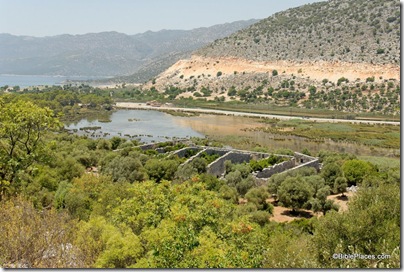A third-century A.D. Roman building has been excavated in the City of David in Jerusalem.
Excavations in this past and future parking lot located in the Central (Tyropean) Valley have formerly revealed a first-century A.D. palace believed to have belonged to Queen Helene of Adiabene.
From the press release of the Israel Antiquities Authority:
A spacious edifice from the Roman period (third century CE) – apparently a mansion that belonged to a wealthy individual – was recently exposed in the excavations the Israel Antiquities Authority is carrying out in the ‘Givati Car Park’ at the City of David, in the Walls Around Jerusalem National Park. The excavations are being conducted at the site on behalf of the IAA and in cooperation with the Nature and Parks Authority, and are underwritten by the ‘Ir David Foundation.
According to Dr. Doron Ben-Ami, the excavation director on behalf of the IAA, together with Yana Tchekhanovets, “Although we do not have the complete dimensions of the structure, we can cautiously estimate that the building covered an area of approximately 1,000 square meters. In the center of it was a large open courtyard surrounded by columns. Galleries were spread out between the rows of columns and the rooms that flanked the courtyard. The wings of the building rose to a height of two stories and were covered with tile roofs”.
A large quantity of fresco fragments was discovered in the collapsed ruins from which the excavators deduced that some of the walls of the rooms were treated with plaster and decorated with colorful paintings. The painted designs that adorned the plastered walls consisted mostly of geometric and floral motifs. Its architectural richness, plan and particularly the artifacts that were discovered among its ruins bear witness to the unequivocal Roman character of the building. The most outstanding of these finds are a marble figurine in the image of a boxer and a gold earring inlaid with precious stones.
The full release can be found here (temporary link).
Three high-resolution photos can be downloaded from the IAA website, including photos of the earring and statue and an aerial photograph of the building.
HT: Joe Lauer
